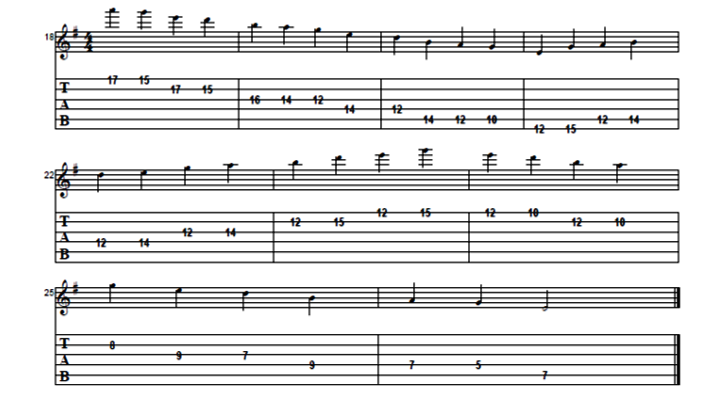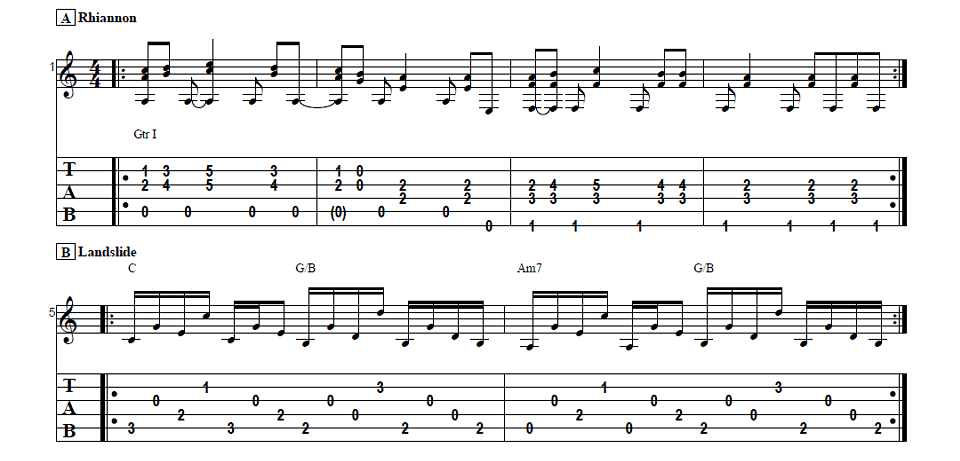Guitar Control presents Remarkable Improvement From Another Uncommon Scale from instructor Darrin Goodman. Be sure to get the tabs so you can easily follow along and get this uncommon pentatonic scale pattern under your belt.


Hey everybody how’s it going? This is Darrin with GuitarControl.com bringing you this video lesson and today I want to kind of do somewhat of a continuation on a lesson I did a week or so ago on a uncommon pentatonic scale pattern. In that video I mentioned that there was another uncommon pentatonic scale pattern and so I want to show you what that other uncommon pentatonic scale pattern is. So be sure to click on the link in the description so you can get the tabs and follow along and let’s get close up and take a look at this uncommon pentatonic scale pattern.
Introduction
All right. So in the previous lesson we first we went over the pentatonic scale pattern number one, which you probably already know and I’m doing this in the key of E. So the other day we did this uncommon pentatonic scale pattern that it’s not one of the five positions of the pentatonic scale, but it’s just an uncommon pentatonic scale pattern that more goes across the neck horizontally instead of being like in this little box. So we did this and then I showed you how to hook them together. So now what I want to do to show you a third uncommon pentatonic scale pattern that I like to use that we’re going to actually hook to these other two patterns and we’ll be able to utilize a really large area of the fretboard. So this uncommon pentatonic scale pattern is very similar to pattern two, so we’re gonna call this one pentatonic scale pattern three. So pattern one is the box pattern and pattern two is this horizontal uncommon pentatonic scale pattern that begins on the A string.
So now what we’re going to do is we’re basically going to take that uncommon pentatonic scale pattern but we’re going to start it on the sixth string and it’s going to use that same philosophy that we did before. So the A string was you know your where your root note was and then you had three notes and then two and then three and then two, so we’re going to do that same idea, but where this can be a little confusing is that the strings that have two notes now have three notes and the strings that have three notes now have two notes, because we’re starting on a string lower. So here we’re going to still continue to do this in the key of E.
Pentatonic Pattern 3
So I’m starting on the 12th fret of the low E with my third finger and then from there we go to the 10th fret of the A string first finger, then the 12th fret of the A string with third finger and then the 14th fret of the A string with your third finger. Now we’re going to move to the D string and now we only have two notes so it’ll be 12 and then 14 and now we move to the G string and it’s gonna have three notes so 12 14 16. Now we move to the B string 15 17 and then to the high E 15 17 19. So ascending the pattern is like this with these fingers and then just like the other sequence when we descend it we’re going to use our third finger, our first finger and then when we when we move down it’ll be our first finger that moves down instead of when we ascend our third finger is the one when there’s three notes on a string ascending it’s first third third but when you descend it’s third first first; I’m referring to fingers and if you have not already seen that video that will probably make this make a whole lot more sense so go ahead and click right here and you can check that one out.
Chaining All 3 Patterns Together
Alright, so the first thing you want to do obviously is just get that Remarkable Uncommon Scale pattern down, you know memorize it so that way you can play it ascending and descending without much problem. And then like always you want to practice it in multiple keys so that way you’re not inadvertently trapping yourself and playing in one key. Okay so now I want to do is show you how you can hook all three of these together, it’s going to work the same way that we did in the other lesson. So we’re gonna start with uncommon pattern two, so again I’m gonna demonstrate this in the key of E, so we’re gonna start on the seventh fret of the A string because that’s an E.
Now just like in the other sequence this very last note is the fret that your first finger plays all the notes on the same fret. Alright, so we ascend to the top and now we’re going to shift up so our first finger is on the12th fret and now we’re gonna descend pattern one; so 15 12 15 12 14 12 14 12 14 12 15 12. Now we just ended where the first note of uncommon pentatonic pattern three is. So now pattern three is going to start here, so what we’ve done is we’ve went all the way up to the 19th fret but we’ve gone as low as the fourth fret, so that’s a pretty good chunk of the fretboard that we’ve covered by only knowing three patterns and technically two of them are basically the same thing, so it’s just by knowing two sequences.
So what you want to do with this exercise is practice it playing through the whole sequence and then play it backwards. Now like I said you want to practice this in multiple keys. So after you have that down, because the tabs are showing it in the key of E minor, so what you’re going to want to do is take that same idea and just transpose it into a different key. So you could simply at first instead of starting on E, starting on D.
Conclusion
So as you can see it’s fairly simple to be able to utilize this in your playing and I did a lesson the other day that had some various licks and stuff based out of these patterns, so the ones that were based out of uncommon pentatonic pattern two can easily be transposed over into playing into pattern three, so I recommend that you check that one out as well.
Alright so that’s all I’ve got for you today. If you like Remarkable Improvement From Another Uncommon Scale video be sure to give it a thumbs up. Leave me a comment down below if you like this kind of stuff and if it helped you out in any way, you know if it broadened your horizons a little bit with as far as how to use the pentatonic scale. Anyway leave a comment if there’s something you’d like to see either myself or one of the other instructors at GuitarControl.com do in a future lesson. That is all I’ve got for you today.
Thanks for watching and have a great day.




